Techstream
 Buy me a coffee
Buy me a coffee
-

Kubernetes Part 5: Linking Application with Database (Discovery)
In this post, we will hook the previously-created application up to the now deployed MySQL database. This post will utilize DNS for discovery and hard-coded credential information, and in potential future posts we will go over a better way to store confidential information in the form of Kubernetes secrets.
-

Kubernetes Part 4: Application Deployments (The Smart Way - YAML Files)
Deploying applications via command-line commands is fun and useful for learning the basics but is not manageable as it relates to maintaining stateful configurations. This post will start over and re-create the components generated thus far from YAML configuration files that describe the desired state of the components that will go into this application deployment, making the solution much more manageable/maintainable.
-
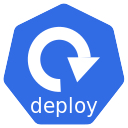
Kubernetes Part 3: MySQL Database Deployment
A bit backwards, but in Part 2 of the series we created and deployed an application. In this post we will be deploying a MySQL database for the application to communicate with, and in Part 4 we will hook this database up to the previously-deployed application.
-

Kubernetes Part 2: Python Flask Application Deployment
With a functioning Kubernetes cluster, this post is the next step in the series that will go over how to create, package, and deploy a basic Python Flask Hello World application to the cluster. The tutorial will include topics such as scaling, service exposure, and other interesting points when deploying applications to Kubernetes clusters.
-

Kubernetes Part 1: Core Concepts and Installation (Minikube)
Although familiar with Docker containers and superficially played with Kubernetes in the past, I’ve not taken the required time to learn the core concepts of Kubernetes to really grasp all the possibilities the technology offers. This post is the first in a series of posts geared towards a deeper understanding of the Kubernetes orchestration application via the use of the Minikube implementation of Kubernetes to simplify the installation. The series of posts will walk through a full implementation of a Python Flask application with MySQL backend and explore concepts such as scaling, auto-healing, service discovery, and other beneficial concepts that Kubernetes offers out of box.
-

Jenkins CI with Python in Docker
An attempt to bring together various components including Jenkins for Continuous Integration (CI), Python for development, and Docker containers for consistency/quality/speed. The post will incrementally demonstrate how to configure a Jenkins pipeline to test a Docker container which contains Python code and associated automated tests. Note that this tutorial is a culmination of several “best practice” tutorials by the specific vendors of the technologies within.
-

Kali - Penetration Testing
This post will list a summary of various tools and examples on how to pen-test a network. Note that this post is ONLY intended for ethical/white-hat hacking and is absolutely not intended to be a source for malicious intent. The tools and methods used within this post are based on a source system using the Kali operating system.
-

Ubuntu RAID 1 Setup
How to set up RAID 1 (redundant copy) on an Ubuntu 17.04 instance.
-

Installing Ansible AWX
Installation and configuration of the Ansible AWX product, the open-source version of the RedHat Enterprise Ansible Tower product.
-
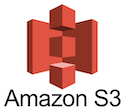
AWS Lambda - Part 3: Writing Data to S3
Tutorial that expands on this previous post demonstrating how to take data in to an AWS Lambda function and write the data in a consistent file-naming format to AWS Simple Storage Service (S3), demonstrating somewhat of an “archiving” functionality.
-
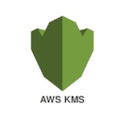
AWS Lambda - Part 2: Securing Data Using KMS
Expands on the first post demonstrating basic AWS Lambda functionality using NodeJS Serverless by adding security via the AWS Key Management System to protect sensitive information for deployed Lambda functions.
-
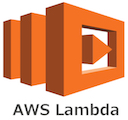
AWS Lambda - Part 1: Using Serverless Framework
Tutorial to document the steps to create an AWS Lambda function using the Serverless Framework for NodeJS using the basic “hello world” project.
-

Debugging JVM Applications
Troubleshooting Java applications running within a Java Virtual Machine (JVM) can be difficult. From memory/heap tuning to thread deadlocks, knowing different ways to approach problems can be helpful in identifying and resolving root cause. This post talks about an example of an issue that occurred with a Jenkins installation intermittently appearing to “pause”, during which time users were not able to view the Jenkins UI through their browser.
-
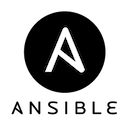
Ansible Tutorial
Keeping with the “things I haven’t used in a while” theme, this tutorial is a re-visit of the Ansible automation platform. It will cover the basics of how to install and configure Ansible on an Ubuntu 16.04 instance as well as use it to provision a Jenkins master instance based on this previous post.
-

Jenkins - Docker Slaves Tutorial
Expanding on the previous Jenkins tutorial, this tutorial will configure Jenkins to utilize Docker containers as build slaves - spinning up Docker containers for builds, running the build, and then destroying the container following the build.
-

Jenkins Tutorial
It has been some time since I’ve actually installed and used the Jenkins software for continuous integration within a CI/CD pipeline. This tutorial is to get re-acquainted with the service and offer some insight into installing, configuring, and setting up a basic Ruby project within Jenkins.
-

Ubuntu PXE Boot Tutorial
Tutorial explaining how to configure an Ubuntu 16.04 server as a Preboot Execution Environment (PXE) server to support automated/unattended provisioning of additional unix-based hosts. Note that this is generally an old implementation but useful to learn and understand infrastructure components. This tutorial is an updated set of instructions from my archive of resources and details the instructions for the latest version of Ubuntu - 16.04.
-

AWS Active Directory Domain Setup
Details on setting up an Active Directory domain in an Amazon Web Services Virtual Private Cloud. Includes domain-joining a Windows-based virtual machine to the domain as well.
-

Syslog Streaming Data Platform
Comprehensive tutorial detailing how to install, configure, and test a processing pipeline that receives log messages from any number of syslog-ng clients, processes the incoming log messages real-time, and stores the raw filtered results into a local log directory as well as sends alerts based on thresholds being exceeded. This tutorial will also include basic abnormality detection as a demonstration of the Spark abilities.
-

Integrate syslog-ng with Kafka
Tutorial on how to integrate syslog-ng with Apache Kafka to allow forward and store of syslog logging for future stream and event processing of the logs.
subscribe via RSS